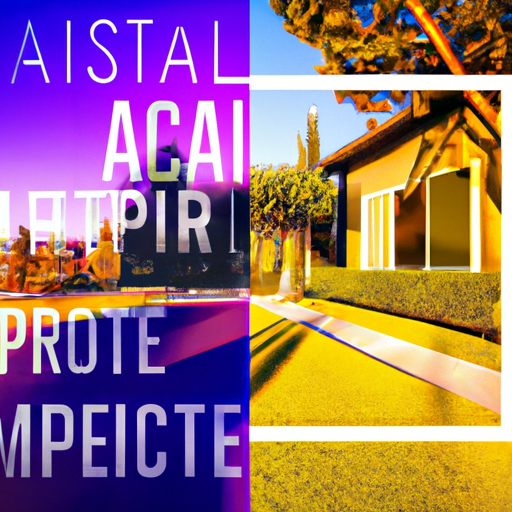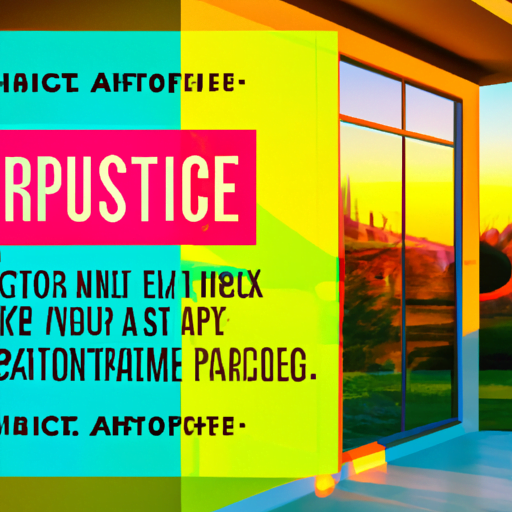
-
Table of Contents
- Typography in Real Estate Marketing: Creating Visual Impact
- The Power of Typography in Real Estate Marketing
- Case Studies: Successful Typography in Real Estate Marketing
- Case Study 1: Zillow
- Case Study 2: Sotheby’s International Realty
- Tips for Creating Visual Impact with Typography
- 1. Choose Fonts Wisely
- 2. Establish Hierarchy
- 3. Consider Readability
- 4. Use Contrast
- 5. Keep it Consistent
- Summary
Typography in Real Estate Marketing: Creating Visual Impact

Typography plays a crucial role in real estate marketing, as it can significantly impact the visual appeal and effectiveness of marketing materials. In a competitive industry like real estate, it is essential to stand out from the crowd and capture the attention of potential buyers. This article explores the importance of typography in real estate marketing and provides valuable insights on how to create visual impact through effective typography.
The Power of Typography in Real Estate Marketing
Typography is more than just selecting a font for a real estate advertisement or website. It encompasses the art and technique of arranging type to make written language legible, readable, and visually appealing. In real estate marketing, typography can convey the brand’s personality, evoke emotions, and guide the viewer’s attention.
Here are some reasons why typography is crucial in real estate marketing:
- Brand Identity: Typography helps establish a consistent brand identity for real estate companies. By using specific fonts and styles consistently across all marketing materials, including websites, brochures, and signage, a brand can create a cohesive and recognizable image.
- Legibility: Real estate marketing materials often contain a significant amount of information, such as property details, contact information, and legal disclaimers. Choosing legible fonts ensures that potential buyers can easily read and understand the information presented.
- Emotional Connection: Typography can evoke emotions and create a connection with potential buyers. Different fonts have distinct personalities, and selecting the right font can help convey the desired message. For example, a modern and sleek font may be suitable for luxury properties, while a more traditional font may be appropriate for historic homes.
- Visual Hierarchy: Effective typography helps guide the viewer’s attention and highlight essential information. By using different font sizes, weights, and styles, real estate marketers can emphasize key selling points, such as property features or pricing.
Case Studies: Successful Typography in Real Estate Marketing
Several real estate companies have successfully utilized typography to create visual impact and achieve marketing success. Let’s explore some case studies:
Case Study 1: Zillow
Zillow, one of the leading online real estate marketplaces, understands the importance of typography in their marketing efforts. They use a clean and modern sans-serif font for their logo and website, which reflects their brand’s contemporary and tech-savvy image. The font’s simplicity and readability make it easy for users to navigate the website and find the information they need.
Additionally, Zillow effectively uses typography to highlight key information in property listings. They use bold and larger font sizes to emphasize property features, pricing, and other essential details. This helps potential buyers quickly identify the most relevant information and make informed decisions.
Case Study 2: Sotheby’s International Realty
Sotheby’s International Realty, a luxury real estate brand, understands the importance of typography in conveying elegance and sophistication. They use a combination of serif and script fonts in their marketing materials to create a sense of luxury and exclusivity.
The serif font used in their logo and headings adds a classic and refined touch, while the script font used for property descriptions and captions adds a sense of elegance. This combination of fonts helps create a visual hierarchy and guides the viewer’s attention to the most important information.
Tips for Creating Visual Impact with Typography
Now that we understand the importance of typography in real estate marketing, let’s explore some tips for creating visual impact:
1. Choose Fonts Wisely
When selecting fonts for real estate marketing materials, consider the brand’s personality and target audience. Choose fonts that align with the brand’s image and evoke the desired emotions. For example, a modern and minimalistic font may be suitable for a contemporary real estate brand, while a more traditional font may be appropriate for a brand specializing in historic properties.
2. Establish Hierarchy
Use different font sizes, weights, and styles to establish a visual hierarchy and guide the viewer’s attention. Important information, such as property features and pricing, should be emphasized using larger font sizes or bold styles. This helps potential buyers quickly identify the most relevant details.
3. Consider Readability
Ensure that the chosen fonts are legible and readable, even at smaller sizes. Avoid overly decorative or complex fonts that may hinder readability. Test the readability of fonts across different devices and mediums to ensure a consistent and pleasant reading experience for potential buyers.
4. Use Contrast
Contrast can create visual interest and make typography stand out. Consider using contrasting font styles or colors to highlight important information or create emphasis. However, be mindful of maintaining a cohesive and harmonious overall design.
5. Keep it Consistent
Consistency is key in real estate marketing. Use the same fonts and styles across all marketing materials to establish a cohesive brand identity. Consistency helps build recognition and trust among potential buyers.
Summary
Typography plays a vital role in real estate marketing by creating visual impact and conveying essential information. By carefully selecting fonts, establishing hierarchy, considering readability, using contrast, and maintaining consistency, real estate marketers can effectively capture the attention of potential buyers and convey the desired message.
Successful real estate companies like Zillow and Sotheby’s International Realty have utilized typography to create a strong brand identity and connect with their target audience. By following these tips and studying successful case studies, real estate professionals can enhance their marketing efforts and stand out in a competitive market.
